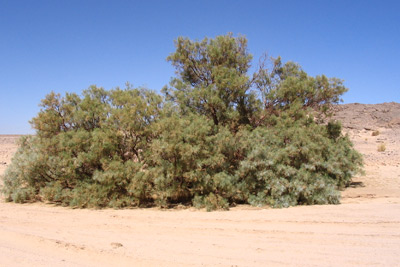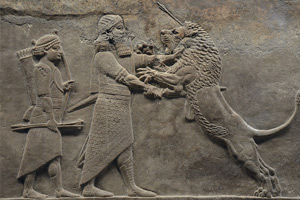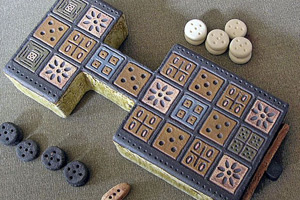
Bad-tibira
Bad-tibira (Sumerian: 𒂦𒁾𒉄𒆠, bad3-tibira ki) is recorded in the Sumerian king list as being one of the five cities that existed before the flood, and Bad-tibira was the second oldest after Eridu. According to this list, the three rulers before the flood ruled for thousands of years each (they might represent dynasties or time eras instead of actual human rulers).
Around 3500 BCE, the city of Bad-tibira suffered a terrible fire and destruction. The fire was so hot it melted (vitrified) the clay bricks. The rebuilding of the city was started around hundred years later.
The name of Bad-tibira can be translated as the "Wall of the Copper Workers" or "Fortress of the Smiths". In later Greek, the city was called the "Canal of the Smiths".
In the epic poem "Inanna's Descent into the Underworld", Inanna must find someone to replace her if she is going to be released from the underworld. She choses her husband Dumuzi. Later, Dumuzi's sister is allowed to alternate with Dumuzi, allowing the god of harvests to come to the earth for the harvest season.
Tell al-Madineh or Madain is located in Dhi Qar Governorate in Iraq, about 10 kilometers northeast of Larsa, on the Iturungal Canal, one of the two main courses of the Euphrates in antiquity.
There has been recent looting of the site - various holes can be seen from aerial photos.
Interesting articles
You may also be interested in these articles

Trees in Sumeria
It is easy to think of Sumeria as a barren land, only kept alive by irrigation canals. In addition to irrigated trees such as date palms, we also find interesting flora such as the tamarisk, juniper and cedar.

The Lion Hunt
If you have visited the Sumerian section of the British Museum, chances are you have seen the Lion Hunt of Ashurbanipal. It is a series of very impressive wall coverings illustrating the King Ashurbanipal's prowess.

The game of Ur
Possibly the oldest board game in existence, and surely the oldest we have rules for, the Game of Ur is a fascinating predecessor to Backgammon. Watch a video on how to play it, and see the original at British Museum.

